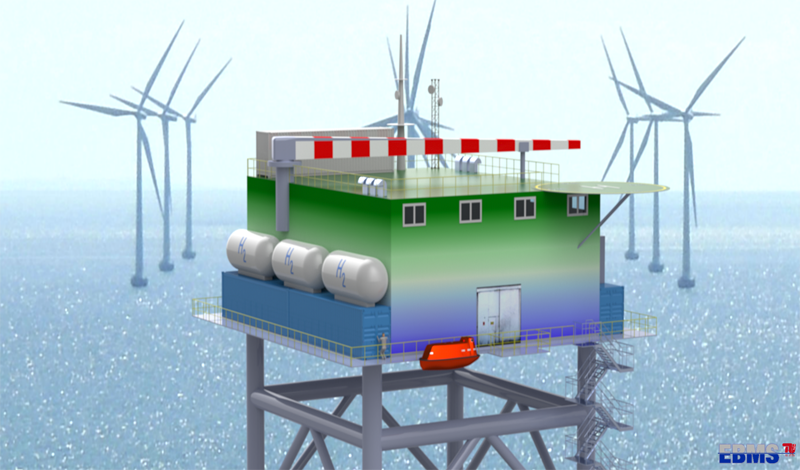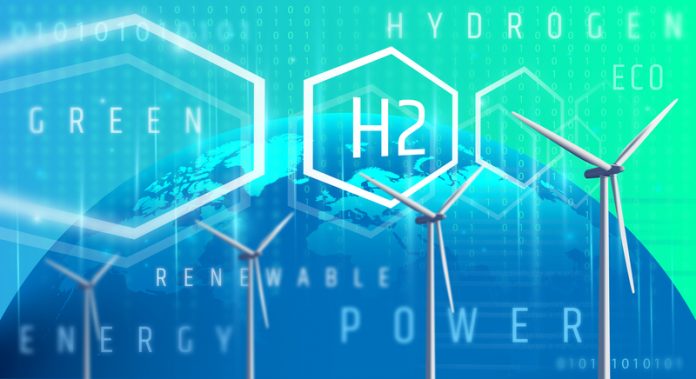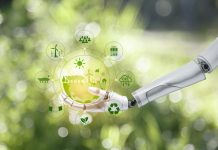GERICS discusses the production of green hydrogen offshore for sustainable energy solutions in Germany
Green hydrogen is considered a major building block for Germany’s energy transition. Its production with offshore wind power is promising, but the acceptance of this new technology among stakeholders and the wider population is key for its successful realization. In the project H2Mare, GERICS accompanies the development of such offshore technologies with an acceptance analysis.
To achieve greenhouse gas neutrality by 2045, Germany must drastically reduce its carbon footprint. The production of green hydrogen, obtained from renewable electricity, can make a significant contribution to this policy goal. The flexible energy carrier and secondary products derived from it, such as ammonia, methanol and synthetic fuels – called Power-to-X (PtX)-products ̶ can store the energy generated, and can be used in industry, or the transport sectors for example, thus serving to replace the use of fossil fuels.
For the production of green hydrogen, offshore wind farms show great potential. At sea, large areas with more consistent wind are available, and there are fewer conflicts concerning their use compared to onshore windfarms. Especially in areas in far distance to the shore, where grid connection becomes a major challenge, the transformation of wind energy into hydrogen and other PtX-products and its transport via pipeline or ship to the coast is considered favourable.
The project H2Mare is exploring this potential. H2Mare is one of three hydrogen flagship projects, funded by the German Federal Ministry of Education and Research (BMBF) with a total of up to 740 million euros[i]. In H2Mare, the direct production of green hydrogen and a range of different secondary products with offshore wind power will be investigated together with around 32 partners from science and industry, over the four year lifetime of the project[ii]. Besides developing a new type of off-grid wind turbine with an integrated electrolyser, H2Mare is also testing options for an open-ocean platform to directly produce further PtX-products from offshore wind energy.

While 89% of Germany’s population support the expansion of renewable energies as such[iii], several large infrastructure projects were not realised due to resistance in society, such as onshore wind farms or power lines. In case of an offshore PtX-platform, e.g. environmental organisations might have concerns regarding the impact on the marine ecosystem, residents and the tourism industry may fear increasing ship traffic and infrastructure development along the coast with little benefit for the community, and fisheries might be afraid of losing valuable fishing areas.
The early involvement of people and stakeholder affected by such infrastructure initiatives is therefore key. The aim is less to convince people, but to jointly identify and discuss critical aspects that influence the acceptance of a new technology among different actor groups. Giving stakeholders a voice, discussing trade-offs in a transparent way, and considering concerns already at an early stage of the development process increases chances that solutions are developed which are acceptable and may spread large scale.
In H2Mare, the engagement of stakeholders and the analysis and consideration of their concerns and conditions for acceptance is an integral component of the project. In a first step, GERICS conducted a stakeholder analysis with a focus on the German North Sea and Baltic Sea region. Mainly based on desktop research and in exchange with project partners and experts, we identified stakeholders that may affect or may be affected – in a positive or negative way – by a PtX-Platform. We identified six major groups:
- Administration and public authorities on the local, federal and national level and international organisations setting regulatory conditions;
- Environmental organisations, fisheries associations, sea rescue, coastal protection and tourism organisations that may be affected in their scope of action;
- Chambers of commerce, regional and economic development agencies, research projects, ports and public services in coastal regions that may benefit in terms of economic and climate goals;
- Networks of experts, media, science, schools and museums that may serve for knowledge transfer;
- Private offshore and other industries as producer and user of PtX-products;
- Political actors and ministries (federal and national) setting general conditions and expansion targets.
Next, GERICS will conduct interviews with key representatives of these stakeholder groups to learn in detail about their concerns and hopes regarding the establishment of offshore PtX-platforms. In focus group discussions, we aim to bring stakeholders with similar points of views together to discuss and collect the conditions they consider necessary for an acceptable realisation. In final workshops, we then bring all stakeholders together in order to develop a mutual understanding of the different positions and their consequential requirements. In all these steps, the regular exchange and engagement with project partners is essential in order to ensure that critical aspects will be considered already during the development of the technology on the one hand, but to also clarify technical feasibilities and ease unjustified fears on the other hand.
The need for green hydrogen and other secondary products in order to reach Germany’s climate goals are huge. In early 2022, Germany’s Ministry for Economic Affairs and Climate Action has announced to increase its expansion goals for offshore wind energy to 30 GW and its electrolysis capacity to 10 GW by 2030[iiii]. Currently, Germany has an annual offshore capacity of 7,8 GW. To realise such goals, the energy transition is not only a technical, but also a societal challenge. If we are to achieve the societal transformation necessary for a sustainable future, we need to develop innovative technologies that are socially accepted and supported.
Author: Dr. Laura Schmidt
laura.schmidt@hereon.de
Tel. +49-40-226338-483
GERICS Climate Service Center Germany
An institution of Helmholtz-Zentrum Hereon
[i] Hydrogen Flagship Projects: https://www.wasserstoff-leitprojekte.de/home
[ii] H2Mare: https://www.wasserstoff-leitprojekte.de/projects/h2mare
[iii] Renewable Energy Agency: https://www.unendlich-viel-energie.de/english/acceptance-of-renewable-energy-in-germany-2019
[iiii] Ministry for Economic Affairs and Climate Action: https://www.bmwk.de/Redaktion/DE/Downloads/Energie/220111_eroeffnungsbilanz_klimaschutz.pdf?__blob=publicationFile&v=22
More About Stakeholder
-
Climate Service Center Germany (GERICS)
The Climate Service Center Germany (GERICS) was initiated by the German Federal Government in 2009 as a fundamental part of the German hightech-strategy for climate protection. Since June 2014, GERICS has been a scientific organizational entity of Helmholtz-Zentrum hereon GmbH. The director of GERICS is meteorologist and climate scientist Prof. Dr. Daniela Jacob. Mission […]









